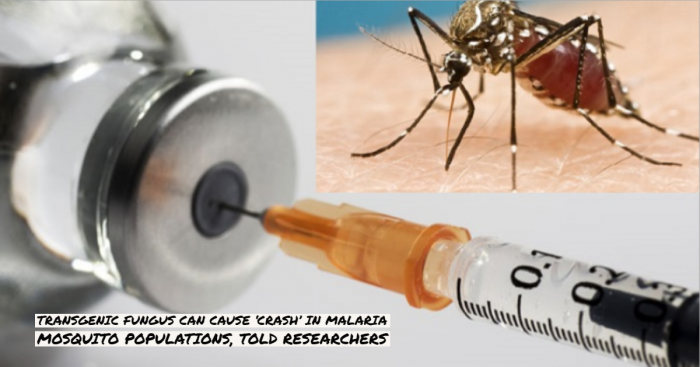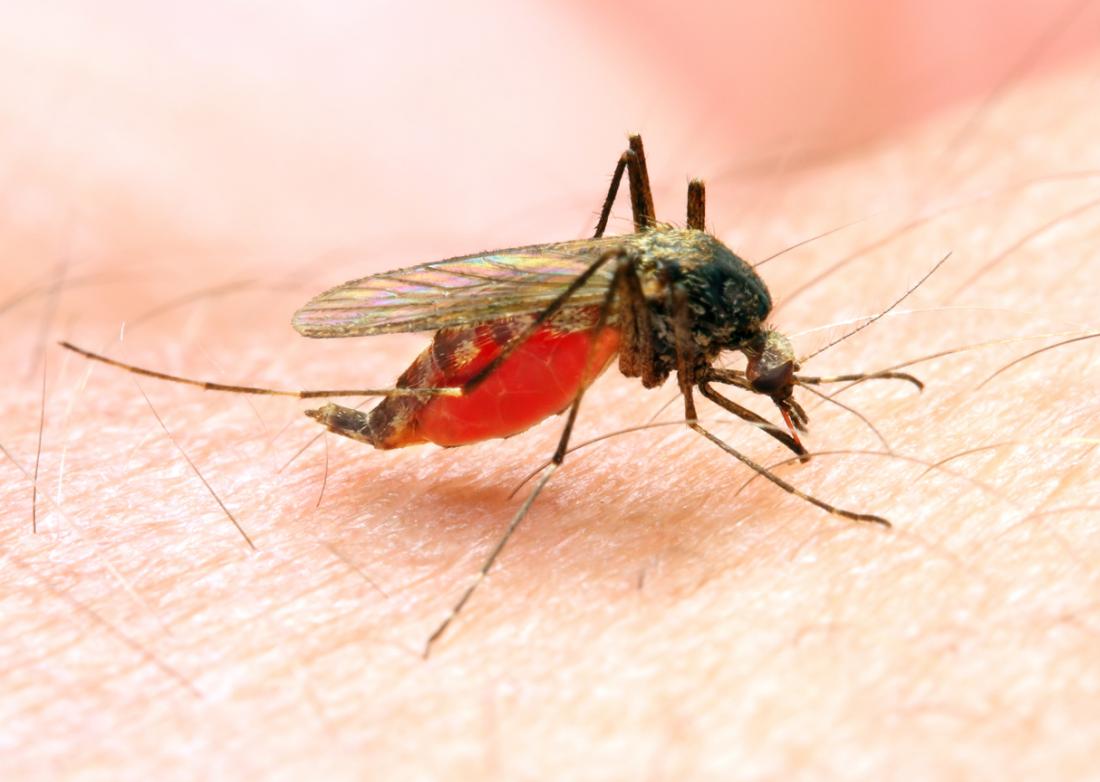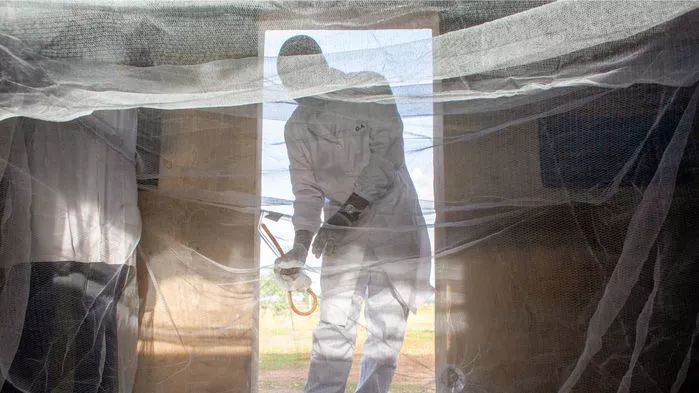Study Finds That GM Fungus Can Rapidly Kill 99% of Malaria Mosquitoes
Malaria is infectious is something we all know. So, a permanent cure is necessary. Well, researchers are doing the same. Yes, recently they did a study which shows how to kill huge numbers of mosquitoes that spread malaria. Learn all about it!

We all know that malaria is one hazardous disease people experience, which is caused by an annoying insect called mosquito. According to stats, the disease kills one child every 30 seconds, that means around 3000 children die of malaria every day.
Moreover, reports from the World Health Organization suggest that around 435,000 people died due to malaria in 2017 globally.
However, recently, a study has found that a fungus genetically modified to produce spider toxin can rapidly kill over 99 percent of the mosquitoes that spread malaria.
What is Malaria?

Malaria, an infectious disease, is a life-threatening disease caused by parasites which are transmitted to people through the bite of infected mosquitoes, i.e., female Anopheles. However, it is curable as well as preventable.
According to reports, there were an estimated 219 million cases of malaria in 87 countries in 2017. Moreover, in the same year, the estimated number of malaria deaths stood at 435 000.
In all the most affected region, which carried a disproportionately high share of the global malaria burden is the WHO African Region. As per the stats, the region was home to 92% of malaria cases and 93% of malaria deaths in 2017.
At that time of the year, total funding for malaria control and elimination reached an estimated US$ 3.1 billion. Moreover, representing 28% of total funding, contributions from governments of endemic countries amounted to US$ 900 million.
About the Research

Many of the trials took place in Burkina Faso which showed mosquito populations collapsed by 99%, and that too within 45 days.
While speaking about the study, researchers have said that aim is to stop the spread of malaria only, not to make the insects extinct.
As we already mentioned that malaria is the disease which is spread when female mosquitoes drink blood and also kills more than 400,000 people per year. It has been reported that there are about 219 million cases of malaria each year worldwide.
While conducting the study, researchers at the IRSS research institute in Burkina Faso and the University of Maryland in the US first identified a fungus called Metarhizium pingshaense, which naturally infects mosquitoes, Anopheles that spread malaria. After that, the next stage was to enhance the fungus.
In an interview with BBC News, Prof Raymond St Leger from the University of Maryland said,
“They're very malleable, you can genetically engineer them very easily.”
Further, in the procedure, the researchers turned to a toxin found in the venom of a species of funnel-web spider in Australia, a country in Oceania.
For making the toxin, the genetic instructions were added to the fungus's genetic code so it would start creating the toxin once it was inside a mosquito.
Prof St Leger explained,
“A spider uses its fangs to pierce the skin of insects and inject toxins, we replaced the fangs of spider with Metarhizium.”
So, the tests at the laboratory showed that the genetically modified fungus could kill quicker, and also it took fewer fungal spores to do the job. Now, the second step was to test the fungus in real-world conditions, as close as possible.
How They Executed It?

To complete the tests, a 6,500-sq-ft fake village was set up in Burkina Faso which was filled with huts, plants, water sources and food for the mosquitoes. Moreover, to prevent anything from escaping, the area was surrounded by a double layer of mosquito netting.
The mixture of fungal spores with sesame oil also wiped on to black cotton sheets. Hence, the mosquitoes had to land on the sheets to be exposed to the deadly fungus. With around 1,500 mosquitoes, the researchers started the experiments.
As per the published results of the tests in journal Science, the numbers of insects rose once they were left alone. However, there were just 13 mosquitoes left after 45 days, when the spider-toxin fungus was used.
Dr. Brian Lovett from the University of Maryland said,
“The transgenic fungus quickly collapsed the mosquito population in just two generations.”
One more thing tests showed that the fungus would not affect other insects such as bees but only specific to these mosquitoes.
He added,
“Our technology is not aiming to drive the extinction of mosquitoes, what we're aiming to do is break malaria transmission in an area.”
As mosquitoes are becoming resistant to insecticides, new tools are needed to tackle malaria. Earlier the World Health Organization has already warned that states of malaria-prone people are now rising in the ten worst affected countries in Africa. They also reported that Madagascar, Nigeria, and the Democratic Republic of the Congo had the highest estimated increases of these.
While talking on the findings, Prof Michael Bonsall from the University of Oxford said,
"Neat - this is a super-exciting study.
The prospects for controlling mosquitoes using this modified fungus are high.
Proportionate bio-safety regulations are needed to ensure that the viability of this and other approaches for vector [mosquito] control using genetic methods are not lost through overly zealous restrictions."
From the Liverpool School of Tropical Medicine, Dr. Tony Nolan added,
"These results are encouraging.
We need new and complementary tools to augment existing control methods, which are being affected by the development of insecticide-resistance."
A malaria expert at the Ifakara Health Institute in Dar es Salaam, Tanzania, Gerry Killeen, also commented on the findings. He said that the transgenic fungus might have a benefit over those found in nature: it could be easier to turn into a product worthwhile for a company to develop and market if it could be patented.
He said,
“The greatest barrier to new malaria control tools isn't lack of technology or imagination, it's the lack of a market.”
And the product could be longer-lasting and less expensive than unmodified fungi because the transgenic fungus needs so few spores to cause a lethal infection.
Killeen says,
“If this technology has the potential to reduce costs and extend product lifetime simply by being more potent.
Then bring it on.”
Well, we hope the work of these researchers will achieve success. Let’s hope for the best!
Popular Posts
What Is Trypophobia – A Disgust More Than Fear
"I can't really face small, irregularly or asymmetrically placed holes, they make me like, throw up in my mouth, cry a little bi...
Chandan Roy
16 Interesting Facts About Ambidextrous People
A lefty or left-handed uses his left hand more naturally and dominantly than the right hand. And the righty or right-handed is o...
Ethan Stephans
20 Interesting Facts About Meteoroid, Meteor and Meteorite
Watching celestial objects is a true delight. It is still fun to catch a sight of shooting stars when we grow up. A second of th...
Swati Bhandari








